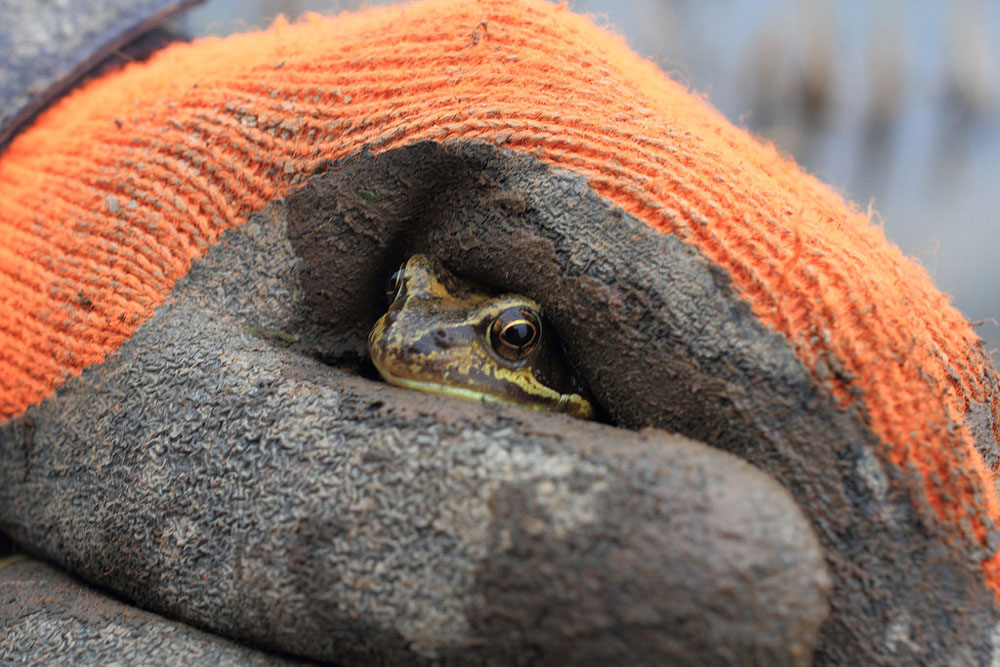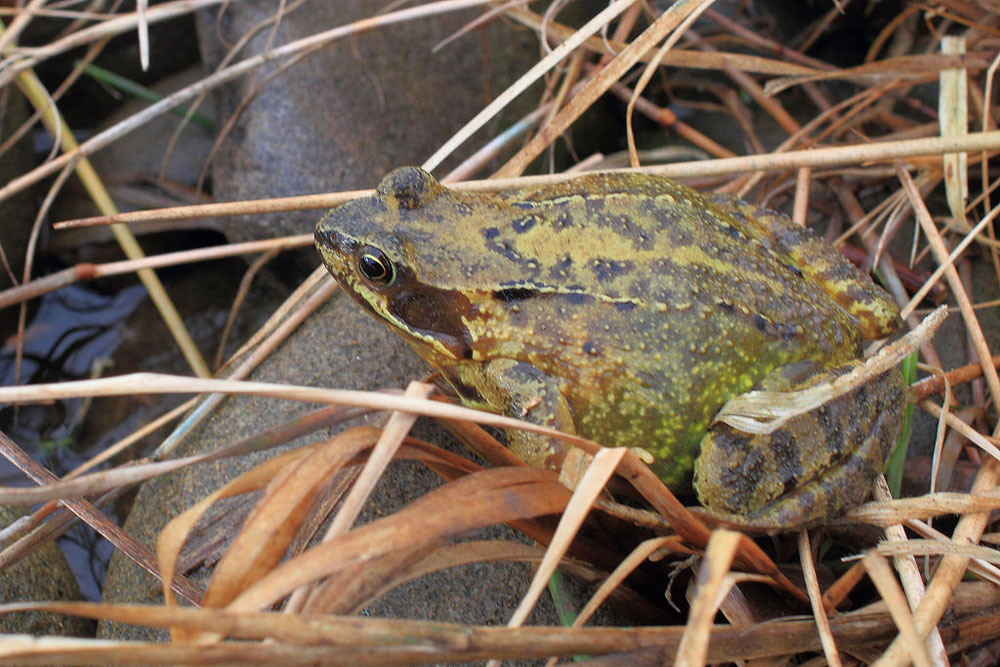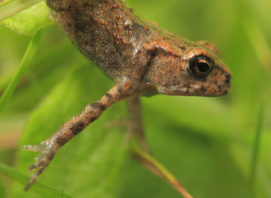Common Frog
Description: Strong, short-legged brown frog with a blunt and somewhat raised snout if seen from the side. If the hind legs are carefully bent forward along the body, the joint of the heels does not reach the snout. Oppressed smooth or slightly granular in texture with two closely spaced dorsolateral folds. During the breeding season females often show pearly granules on their flanks. Brown ear patch with obvious eardrum in the centre. Below this dark patch the upper lip is often contrastingly pale. Upperside variable, pale brown to dark brown, yellowish, olive or reddish, with irregularly patterned black or brownish spots. Sometimes with a pale, diffused central dorsal line. Belly whitish to grey, usually barrel or spotted brownish (reddish brown in females). Strong webbing between hind toes. Metatarsal tubercles flat, soft and short (first toe is 2.2-4 times as long as the metatarsal tubercle) Males have two inner vocal sacs in throat, during breeding season they have black nuptial pads on the thumbs, a bluish throat and a soft body due to an accumulation of lymph under the skin.
Habitat: Found in both lowlands and mountains; especially in cool, shady places. Very common, especially in open areas such as gardens, moist pastures and arable land, but also in woods. Some populations have been declining at an alarming rate recently. Mating occurs in quiet and slow-flowing bodies of water of varying sizes: ponds, pools, swamps, ditches, temporary puddles, or sun-exposed shores of lakes. In the summer often stays close to streams or ponds. Hibernates in the water or on land. Common Frogs hibernating under water are sometimes active underneath a layer of ice.
Notes: Adaptive species that feeds on insects and other anthropoids. In Britain active between February and October, especially at night, may be diurnal during the egg-laying period. Lays its eggs rapidly, and is present at its breeding site for a relatively short period (up to April). After that they disperse to their summer quarters. During these movements they cover mostly short distances of about 1-2 km, but distances of up to 10 km and an altitudinal migration of 500-1000 m have been recorded. In the south it is quite common for egg-laying to take place into November, while at higher altitudes it only lasts until June. Males have a quiet, growling voice. They grasp their arms around the female’s shoulders. Each couple deposits one or, at the most two clumps of spawn, each with 1,000-4,000 eggs, on the bottom of the pond. Often hundreds of pairs gather in favoured parts of a breeding site. The numerous deposited clumps of spawn usually rise to the surface of the water due to tiny air bubbles, and they form large carpets. Eggs are resistant to low temperatures and can even survive freezing for short periods. Larvae hatch after 2-3 weeks and metamorphose after 2-3 months when the are about 4.5 cm long. The newly metamorphosed frogs are just 10-15 mm long due to the shortening of the tail.
Quoted from, New Holland, European Reptile and Amphibian Guide by Axel Kwet



